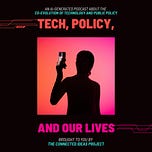TL;DR: Engineering Biology and Public Trust
Engineering biology holds immense potential to transform society, addressing critical challenges in healthcare, sustainability, and industry. Yet, public trust remains fragile, as a recent UK survey reveals that over 60% of people have never heard of the field, and fewer can explain it. While the public is optimistic about its applications—ranging from low-carbon fuels to healthcare—transparency, safety, and regulation emerge as non-negotiable priorities.
The survey highlights a paradox: people demand clarity about engineering biology but often lack the foundational knowledge to engage deeply. This underscores the urgent need for scientists, policymakers, and educators to demystify the field, fostering informed public discourse. Safety is paramount, with most respondents prioritizing rigorous verification of products over cost or convenience. Effective policy and adaptive regulation must evolve alongside the technology, balancing the need for rapid innovation with public confidence.
Generational divides further shape perceptions. Younger people, while comfortable with emerging technologies, are more skeptical about their societal benefits. This reflects a growing demand for innovation that aligns with values like sustainability and equity.
Ultimately, the story of engineering biology is about trust and shared ownership. It challenges us to engage with transformative technologies not as passive consumers but as active participants in shaping their narrative. To realize its promise, engineering biology must go beyond science—it must connect with humanity’s values, ensuring the future it creates is one we all want to share.
Engineering Biology and the Public Trust: A Reflection on Transparency and Transformation
Imagine a world where our food is sustainably grown, our healthcare is tailored to our genetic blueprints, and our environmental challenges are addressed through innovation so seamless that it feels like magic. This is the promise of engineering biology, a field with the power to redefine the boundaries of human capability and ecological stewardship. Yet, the road to this future isn’t paved solely by scientific breakthroughs—it’s navigated through the labyrinth of public trust and understanding.
A recent survey conducted in the UK reveals a fascinating but sobering reality: while the public generally sees the potential of engineering biology as positive, their understanding of it is, at best, superficial. Over 60% of respondents had never heard of the term, and among those who had, only a small fraction could explain it with any clarity. This knowledge gap is more than a trivia problem—it’s a societal challenge that shapes the trajectory of adoption, regulation, and innovation.
The Transparency Paradox
One of the survey’s most striking findings is the universal demand for transparency. Overwhelmingly, people want to know when and how engineering biology is used in products and services. This sentiment is a double-edged sword. On one hand, transparency fosters trust and empowers consumers. On the other, it requires a level of scientific literacy that many people don’t yet possess.
This tension reminds me of a broader paradox in our relationship with technology: we want innovation to work invisibly in our lives, but we also demand to know how it functions and impacts us. Engineering biology is no exception. The more transformative its potential, the more urgent the need for clear, honest communication.
But how do we build that bridge? How do we translate the complexities of synthetic DNA or bioengineered enzymes into language that resonates without condescension? As someone steeped in both science and communication, I see this as a clarion call for scientists, policymakers, and educators to rethink how we engage the public.
The Safety Imperative
If transparency is the bedrock of trust, safety is its scaffolding. Across all demographics, the survey respondents ranked safety as their top priority when considering products derived from engineering biology. Whether it’s food, healthcare, or bio-based materials, people want assurance that what they use is not just innovative but safe.
This is where policy and regulation come into play. The public’s demand for safety isn’t a rejection of progress; it’s a challenge to get it right. Regulatory frameworks must evolve alongside technological capabilities, ensuring that innovation doesn’t outpace oversight. The challenge, however, is crafting policies that are both rigorous and adaptive—no small feat in a field as dynamic as engineering biology.
For me, this raises a deeper question: How do we balance the urgency of addressing pressing issues, like climate change or global health crises, with the need to ensure that the solutions themselves are sound? It’s a delicate dance, one that requires humility from innovators and vigilance from regulators.

The Role of Policy in Shaping Public Perception
The survey also highlights a curious dynamic: while many people trust the government to make decisions about engineering biology, they also want a voice in those decisions. This duality underscores the importance of inclusive policymaking.
Policy doesn’t just regulate innovation; it narrates its story. When governments involve the public in meaningful ways—through consultations, transparent decision-making, and accessible education—they don’t just create better policies; they cultivate a sense of shared ownership. Engineering biology, with its profound implications for health, environment, and industry, demands nothing less.
I often think about how the public narrative around technology evolves. Consider the trajectory of CRISPR. Initially heralded as a miracle tool for gene editing, it quickly became a lightning rod for ethical debates. The lesson here is clear: without a proactive effort to involve the public, the narrative will be shaped reactively, often by fear or misinformation.
A Generational Divide
One of the more nuanced findings of the survey is the generational divide in attitudes toward engineering biology. Younger respondents, while generally more comfortable with emerging technologies, are less likely to view them as unequivocally positive. This skepticism isn’t necessarily a bad thing—it reflects a generation more attuned to the complexities and trade-offs of innovation.
As someone who has spent years in the trenches of deep tech, I see this as an opportunity. Younger generations are demanding more from technology—not just functionality but alignment with their values. Engineering biology has the potential to meet those demands, but only if we approach it with the same critical lens that these young skeptics bring.
The Bigger Picture
At its core, the story of engineering biology isn’t just about technology; it’s about how we as a society decide what kind of future we want to build. The survey’s findings are a snapshot of a moment in time, but they point to enduring questions: How do we define progress? Who gets to decide which innovations are pursued and how they’re implemented?
These are not questions for scientists or policymakers alone. They are questions for all of us. Engineering biology, like any transformative technology, is a reflection of our collective priorities and values. Its promise will only be realized if we approach it with curiosity, responsibility, and a willingness to engage in hard conversations.
As I reflect on these findings, I’m struck by how they echo broader themes in the co-evolution of technology and society. Engineering biology isn’t just a field; it’s a lens through which we can examine our relationship with innovation itself. It challenges us to think deeply about trust, transparency, and the future we’re creating.
So, as you navigate your own relationship with technology—whether it’s a bioengineered medicine, a sustainable fuel, or an app on your phone—consider this: What questions are you asking? And how might the answers shape the world around you?
The promise of engineering biology is immense. But like any promise, it’s only as strong as the trust it’s built upon. Let’s make sure we’re building something worth believing in.
Cheers,
-Titus
Founder, The Connected Ideas Project
The podcast audio was AI-generated using Google’s NotebookLM
















Share this post